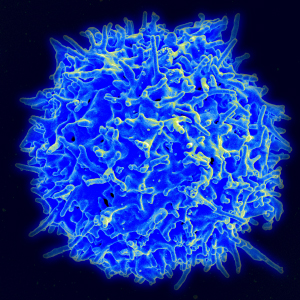Immune cells found to prevent bone marrow transplant rejection
By Krishna Ramanujan

Cornell researchers have identified a type of immune system cell that prevents a patient’s body from attacking donor cells after a bone marrow transplant, a condition called graft-versus-host disease (GVHD).
Such transplants are given in patients with, for example, leukemia or lymphoma or when chemotherapy destroys bone marrow.
These immune cells, called innate memory phenotype CD4+ T-cells, make a protein that suppresses the immune system from attacking newly introduced tissue.
In bone marrow transplant cases, doctors try to match the donor’s and patient’s tissue types, but it can be difficult to find an exact match. As a result, patients often need immune-suppressive drugs, which have such side effects as liver and kidney damage and overall immune system deficiency.
Published in April in the Journal of Immunology, the research identifies conditions that regulate these special immune cells. The researchers hope the findings will lead to ways to identify and possibly boost the presence of these cells.
“This study points to a road map for clinicians trying to avoid graft-versus-host disease,” said Avery August, professor of microbiology and immunology, and senior author of the study. Weishan Huang, a postdoctoral associate in August’s lab, is the paper’s lead author.
“If these cells are present, those patients will be protected from GVHD, and if we can boost their presence, we can suppress the disease, I predict based on our mouse studies,” August added.
The researchers are working to identify markers to distinguish these cells from other, closely related CD4+ T-cells. They are in the process of obtaining approval to work with physicians at Weill Cornell Medical College to characterize these cells in human bone marrow transplant patients to find out if they can predict bone marrow graft acceptance or not, based on the presence of these cells.
For the study, the researchers used inbred, genetically identical mice engineered to selectively express immune system protein tags, which allowed the researchers to identify the specific cell populations.
Co-authors include researchers from Pennsylvania State University and the University of Pennsylvania. The National Institutes of Health funded the research.
Media Contact
Get Cornell news delivered right to your inbox.
Subscribe